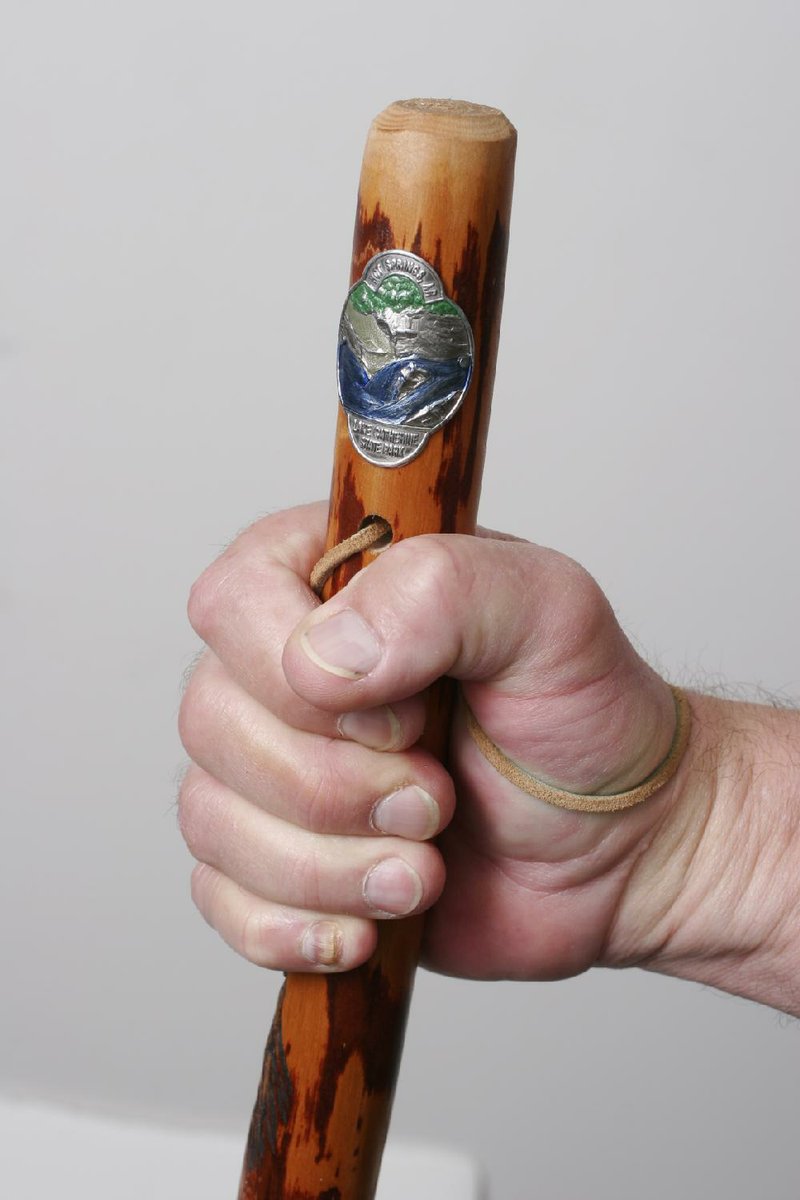LITTLE ROCK — Many urban hikers add an old-fashioned piece of gear to their hitting-the-road getup of athletic shoes, gloves, high-tech sunglasses and jackets with easy-access pockets to hold phones and iPods: walking sticks.
Once only seen on backwoods trails where spider webs block the path or thick shrubbery needs parting, walking sticks are showing up in the hands of city dwellers getting some early-morning or after-work exercise on the sidewalk.
The stick’s primary purpose is to help the walker stay balanced when traversing muddy patches and slick spots and when trying to keep feet dry while tottering along the edge of a curb above a deep puddle.
Walking sticks range from a sturdy chunk of hardwood found in a state park shop to modern aluminum or carbon fiber versions with wrist loops and metal tips for digging into ice and snow. Some fold up for easy transport in a briefcase, backpack or luggage.
A stick improves your posture when walking. It aids in transferring weight from the lower body to your arms and shoulders, reducing strain on legs and lower back, according to the website livestrong.com.
The arm-swinging motion used with walking sticks can help burn a few extra calories. And anyone who has endured a leg or foot injury knows that using a walking stick on the opposite side of the injury allows the shifting of weight onto the stick and away from the damaged limb - you can still go for an invigorating walk without worrying about worsening your situation.
Those in hilly neighborhoods find rubber-tipped sticks useful when heading down a perilously steep slope. And having a stick in hand during snow and ice storms could mean the difference in making it to the grocery (for bread and milk) or shivering in a powerless house with nothing to gnaw but your fingernails because you fear slipping and falling into a crumpled heap on a black-iced street.
Although I usually curse the annoyingly invasive bamboo at the far edge of my yard, a sawed-off length of it - super-strong and very light - came in handy during the Christmas snowstorm that blanketed Little Rock and then degenerated into a frozen, rutted mess. My street is as steep as a ski run, and driving was out of the question. But with the balancing support of my bamboo walking stick (and a pair of Stabilicers, which are like studded snow tires that attach to the soles of boots), I was able to get out and about during the four days that paralyzed most of my neighborhood.
Along with physical benefits, there’s something comforting in the sound of a stick rhythmically clicking against concrete while you trek across the cityscape. And walking sticks look cool, giving the user a gravitas that schlepping along without one just doesn’t offer.
STICKY BUSINESSES
When buying a walking stick, manufacturer Whistle Creek, based in Estes Park, Colo., recommends that you select one that ends 6 to 9 inches above your elbow when you are standing upright with your arm hanging down.
Some walking sticks are adjustable so you can shorten or lengthen them.
Central Texas-based Brazos Walking Sticks, which uses wood harvested in east Texas, Arkansas and western Louisiana (available at Academy Sports), suggests:
a 41-inch stick for people shorter than 4 feet 8 inches
a 48-inch stick for those shorter than 5 feet 4 inches
a 55-inch stick for those between 5 feet 4 inches and 5 feet 11 inches
a 58-inch stick for those over 5 feet 11 inches.
Walking sticks crafted of woods such as hickory, sassafras, dogwood, oak and mixed woods are available from Arkansas Cane in Mammoth Spring. Prices start at $19.99 for a dogwood stick with leather strap and rubber tip. Sticks are shipped via UPS. More information is at (870) 895-3017.
ActiveStyle, Pages 23 on 01/07/2013
